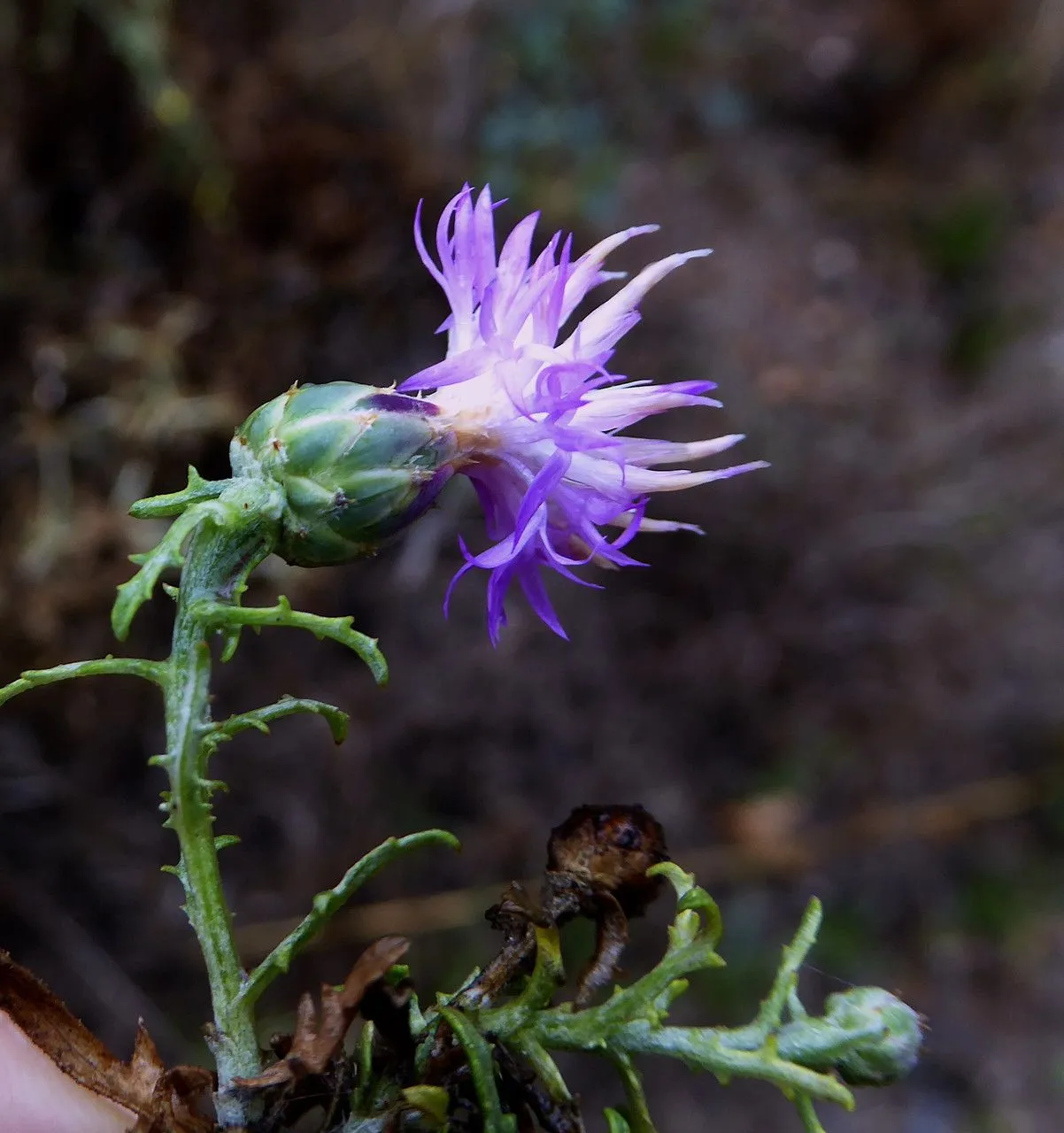
Author: L.
Bibliography: Sp. Pl.: 912 (1753)
Year: 1753
Status: accepted
Rank: species
Genus: Centaurea
Vegetable: Unknown
Observations: Europe
Jersey knapweed, scientifically known as Centaurea paniculata, is a flowering plant belonging to the Asteraceae family. This plant is prominently observed across various regions of Europe, where it contributes to the local flora with its distinctive blossoming features.
Characterized by its hardy, perennial nature, Jersey knapweed displays an erect growth form, often reaching notable heights that stand out in meadows and natural landscapes. The plant’s common habitat includes open fields, grassy meadows, and occasionally roadsides, thriving in environments where it can receive ample sunlight.
The flowers of Jersey knapweed are one of its most striking features. Typically, they bloom in a panicle arrangement, which sets this species apart from other knapweeds with more clustered flower heads. The blossoms are usually a vivid display of pink to purple hues, drawing the eye not only of passersby but also of various pollinators, contributing to its role in the local ecosystem.
Leaves of Centaurea paniculata are often lance-shaped with a slightly serrated edge, providing a delicate contrast to its robust stems. These characteristics help in identifying the plant and distinguishing it from other members of the Centaurea genus.
The Jersey knapweed holds a particular place in botanical history, having been described and documented as far back as 1753 in the seminal work “Species Plantarum” by Carl Linnaeus, who is commonly abbreviated as ‘L.’ in botanical nomenclature. This historical reference marks an important acknowledgment of the species in the scientific community.
In terms of ecological impact, Jersey knapweed plays a valuable role in its native habitats. As a perennial, it provides consistent shelter and food sources for native wildlife. The flowering period usually extends through the summer months, offering long-term sustenance for bees, butterflies, and other pollinating insects.
Understanding the role of Centaurea paniculata in European ecosystems helps in appreciating its worth beyond mere aesthetics. Conservation of such species ensures the continuation of biodiversity and supports the intricate web of life that depends on these native plants.
In summary, Jersey knapweed (Centaurea paniculata) is a notable member of the Asteraceae family, distinguished by its panicle flower arrangement and vibrant colors. Growing predominantly in Europe, it contributes significantly to the ecological and botanical diversity of the region. The documentation and study of this species dating back to Linnaeus’s time underscore its long-standing importance and the need to preserve its natural habitats.
Eng: jersey knapweed, panicled knapweed
Deu: rispen-flockenblume
En: Jersey knapweed, Panicled knapweed
Ca: Centàurea paniculada
Fr: Centaurée à panicule, Centaurée en panicule, Centaurée paniculée
De: Rispen-Flockenblume, Rispige Flockenblume
It: Fiordaliso pennacchiuto
Taken Jul 18, 2022 by Laszlo Tosoki (cc-by-sa)
Taken Jul 15, 2021 by Antoine Luciani (cc-by-sa)
Taken Aug 10, 2018 by Victoria Cabaleiro (cc-by-sa)
Taken Aug 16, 2014 by Tela Botanica − Hervé Goëau (cc-by-sa)
Taken Sep 15, 2017 by Llandrich anna (cc-by-sa)
Taken Sep 29, 2017 by Gym Skuteč (cc-by-sa)
Taken Oct 16, 2020 by Rico García Antonio (cc-by-sa)
Taken Jul 7, 2018 by Ricky Menzer (cc-by-sa)
Taken Sep 14, 2017 by Thomas Michel (cc-by-sa)
Taken Sep 15, 2017 by Llandrich anna (cc-by-sa)
Taken Jul 8, 2021 by Pereira Jorge (cc-by-sa)
Taken Jul 8, 2021 by Pereira Jorge (cc-by-sa)
Taken May 24, 2021 by Prieta Javier (cc-by-sa)
Taken Jul 18, 2019 by Hervé Ramone (cc-by-sa)
Taken Sep 15, 2017 by Llandrich anna (cc-by-sa)
© copyright of the Board of Trustees of the Royal Botanic Gardens, Kew.
Taken Jul 28, 2019 by francois tissot (cc-by-sa)
Taken Jun 24, 2011 by Tela Botanica − Jean-Claude CALAIS (cc-by-sa)
Taken Jun 24, 2011 by Tela Botanica − Jean-Claude CALAIS (cc-by-sa)
Taken Aug 28, 2021 by Jardin Des Cocagnous (cc-by-sa)
Taken Jul 18, 2019 by Hervé Ramone (cc-by-sa)
Taken Sep 11, 2022 by Manu 🍃 (cc-by-sa)
Taken Oct 11, 2022 by Cabanossi Jupp (cc-by-sa)
Taken Jul 5, 2020 by Llandrich anna (cc-by-sa)
Taken Aug 28, 2021 by Jardin Des Cocagnous (cc-by-sa)
Taken Sep 14, 2017 by Thomas Michel (cc-by-sa)
Taken Jul 15, 2011 by Photoflora – Benoit BOCK (©)
Taken Jan 1, 1970 by Photoflora – L’Abbé COSTE (©)
Taken Sep 24, 2013 by Tela Botanica − Liliane Roubaudi (cc-by-sa)
Taken Jul 1, 2021 by Denis Bastianelli (cc-by-sa)
Taken Apr 25, 2014 by Tela Botanica − Geneviève Botti (cc-by-sa)
Family: Myrtaceae Author: (F.Muell.) K.D.Hill & L.A.S.Johnson Bibliography: Telopea 6: 402 (1995) Year: 1995 Status:…
Family: Rubiaceae Author: Pierre ex A.Froehner Bibliography: Notizbl. Bot. Gart. Berlin-Dahlem 1: 237 (1897) Year:…
Family: Sapindaceae Author: Koidz. Bibliography: J. Coll. Sci. Imp. Univ. Tokyo 32(1): 38 (1911) Year:…
Family: Asteraceae Author: A.Gray Bibliography: Pacif. Railr. Rep.: 107 (1857) Year: 1857 Status: accepted Rank:…
Family: Fabaceae Author: Medik. Bibliography: Vorles. Churpfälz. Phys.-Ökon. Ges. 2: 398 (1787) Year: 1787 Status:…
Family: Aspleniaceae Author: (Cav.) Alston Bibliography: Bull. Misc. Inform. Kew 1932: 309 (1932) Year: 1932…